Wir benötigen Ihre Einwilligung zur Verwendung der einzelnen Daten, damit Sie unter anderem Informationen zu Ihren Interessen einsehen können. Klicken Sie auf "OK", um Ihre Zustimmung zu erteilen.
ASTM F2270-12
Standard Guide for Construction and Maintenance of Warning Track Areas on Athletic Fields
Automatische name übersetzung:
Standard-Handbuch für Bau und Instandhaltung von Warnspurbereiche auf Athletic Fields
NORM herausgegeben am 15.7.2012
Informationen über die Norm:
Bezeichnung normen: ASTM F2270-12
Anmerkung: UNGÜLTIG
Ausgabedatum normen: 15.7.2012
SKU: NS-53420
Zahl der Seiten: 4
Gewicht ca.: 12 g (0.03 Pfund)
Land: Amerikanische technische Norm
Kategorie: Technische Normen ASTM
Kategorie - ähnliche Normen:
Die Annotation des Normtextes ASTM F2270-12 :
Keywords:
athletic field, baseball, clay skinned area, softball, soil, sports field, warning track, ICS Number Code 97.220.10 (Sports facilities)
Ergänzende Informationen
| Significance and Use | ||||
|
Warning tracks are playing surfaces located on the margins of the playing area for the purpose of providing a warning to the player that he or she is approaching a hazard (commonly a fence) or out-of-bounds area. In order to provide for an effective warning track surface, the warning track must be constructed and maintained in such a manner so that the player can sense the change in texture from the regular playing surface and the warning track without having to look. This feature is very important in that the player is often visually focused on the ball during play and would not be looking at the ground as he/she is running toward the warning track. The warning track must also be constructed and maintained in such a manner that the warning track itself, or the surface transition, does not pose a hazard to the players. The warning track areas of sports fields should provide a uniform surface with good footing. The change in surface texture of the warning track from the surrounding playing surface must be of enough contrast such that the player can sense the change without looking. Most often, warning track surfaces are devoid of turf or other vegetation. However, turfed warning track areas may be used in instances where such purpose is to “warn” the player of an impending hazard where the primary playing surface is a skinned area. This may be the case in softball where the entire infield playing surface is a skinned area and a turfed warning track is used along the first base and third base fencelines. Undulations, rough surface, hard or soft surface, weeds, stones, debris, wets spots, etc. detract from a good, safe warning track. The safety and effectiveness of the warning track is largely affected by construction and maintenance procedures and this guide addresses those procedures. During construction, consideration should be given to factors such as the physical and chemical properties of materials used in the area, freedom from stones, sticks, and other debris, and surface drainage and internal drainage. Consideration should also be given to the surface elevation such that a drastic change is not produced by the transition from the playing surface to the warning track area which may create a tripping or falling hazard. Maintenance practices that influence the playability of the surface include edging, dragging, rolling, watering, vegetation control, and removal of stones and debris that may adversely affect play and safety. Those responsible for the design, construction, or maintenance, or a combination thereof, of baseball and softball fields, or play areas where the need for a warning track area has been identified, will benefit from this guide. |
||||
| 1. Scope | ||||
|
1.1 This guide covers techniques that are appropriate for the construction and maintenance of warning track areas on sports fields. This guide provides guidance for the selection of materials, such as soil and sand for use in constructing or reconditioning warning track areas and for selection of management practices that will maintain a safe and functioning warning track. Although this guide has applications to all sports where a warning track surface may be required or desired, it has specific applications to baseball/softball. 1.2 This guide does not address synthetic warning tracks such as rubberized surfaces, artificial turf, or paved surfaces. 1.3 Decisions in selecting construction and maintenance techniques are influenced by local soil types, climatic factors, level of play, budget, and training/ability of management personnel. 1.4 The values stated in SI units are to be regarded as the standard. The values in parentheses are for information only. 1.5 This standard may involve hazardous materials, operations, and equipment. This standard does not purport to address all of the safety concerns, if any, associated with its use. It is the responsibility of the user of this standard to establish appropriate safety and health practices and determine the applicability of regulatory requirements prior to use. |
||||
| 2. Referenced Documents | ||||
|
Ähnliche Normen:
Historisch
1.7.2009
Historisch
1.5.2012
Historisch
1.9.2010
Historisch
15.12.2007
Historisch
1.7.2009
Historisch
1.9.2010
Empfehlungen:
Aktualisierung der technischen Normen
Wollen Sie sich sicher sein, dass Sie nur die gültigen technischen Normen verwenden?
Wir bieten Ihnen eine Lösung, die Ihnen eine Monatsübersicht über die Aktualität der von Ihnen angewandten Normen sicher stellt.
Brauchen Sie mehr Informationen? Sehen Sie sich diese Seite an.


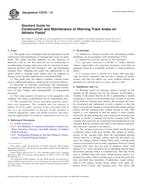
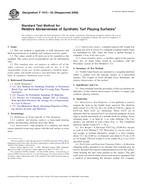 ASTM F1015-03(2009)..
ASTM F1015-03(2009)..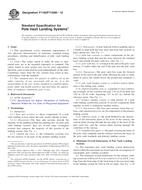 ASTM F1162/F1162M-12..
ASTM F1162/F1162M-12..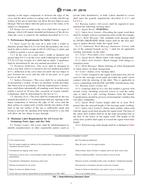 ASTM F1346-91(2010)..
ASTM F1346-91(2010)..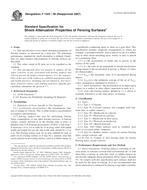 ASTM F1543-96(2007)..
ASTM F1543-96(2007)..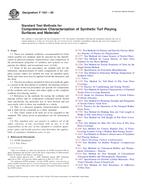 ASTM F1551-09
ASTM F1551-09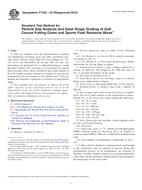 ASTM F1632-03(2010)..
ASTM F1632-03(2010)..
 Cookies
Cookies
